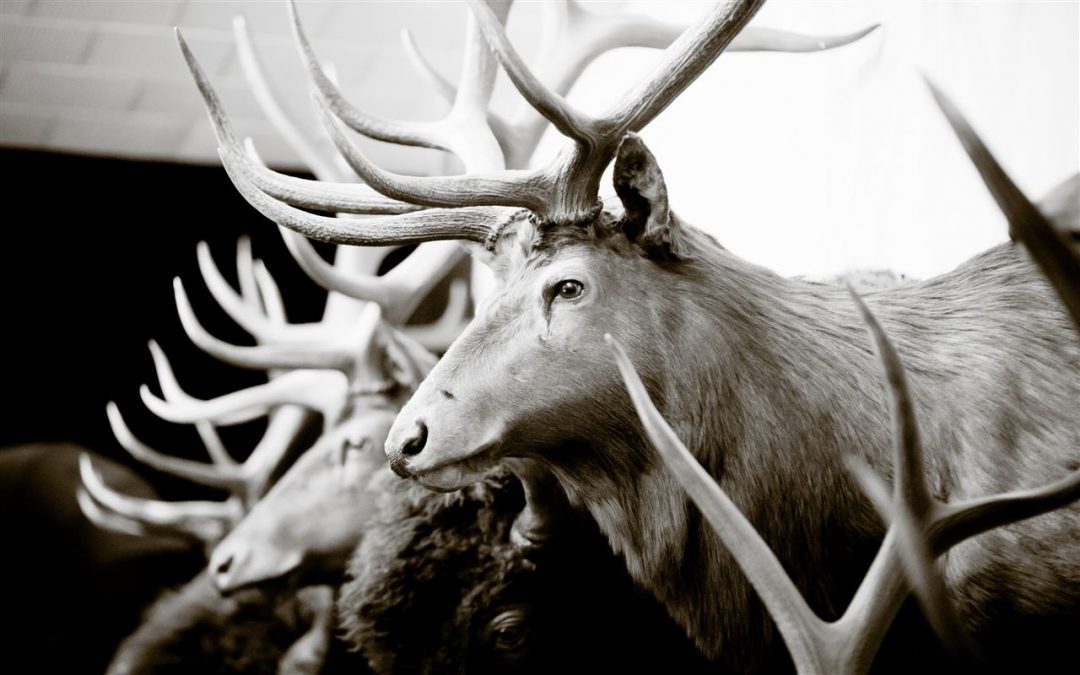Introducing Our Taxidermy Collection of Scalpel Blades
Taxidermy is both science and art. The word taxidermy is made up of two Greek words, taxis and derma. Taxis means “arrangement,” and derma means “skin.” And that’s precisely what taxidermy is – arranging animal skins (either over a framework or by stuffing them) in a way that allows the skins to be scientifically studied or displayed in a natural state, perhaps as personal trophies or part of museum exhibits.
Taxidermy traces its origins back to the ancient Egyptians. Today, it is used to preserve and reproduce animals ranging from fish, birds, and reptiles to deer, elk, and other big game. Part of the art of taxidermy is breathing life back into the shape of the animal through its body positioning and facial expressions.
The key to a perfectly preserved taxidermy specimen is in the prep work. As a taxidermist from Michigan State University Museum explains, there is a lot of meticulous work that goes into prepping an animal skin. Ultimately, you want to be able to tuck the skin precisely onto your mounting form later, so you need to take steps such as splitting the lips, splitting the eyelids, turning the ears inside out, and cutting down to the knuckles on the toes to ensure the skin fits correctly.
For taxidermists, long-lasting, sharp scalpel blades with sturdy handles are an essential tool in their taxidermy supplies.
Taxidermy Scalpel Blades
Taxidermists make many of their cuts with surgical precision, which is why scalpel blades are commonly used for skinning, fleshing, and mounting. Cincinnati Surgical’s taxidermy collection includes the following commonly used scalpel blades:
- Size 10 – The No. 10 blade is the most commonly used for making large incisions into soft skin tissue on smaller animals like birds and squirrels or for caping deer
- Size 11 – The No. 11 blade has a pointed tip, suitable for making stab incisions or other precise, shallow incisions
- Size 12 – The No. 12 blade has a small, pointy, crescent-shaped end that can be good for scraping tissue off the skin during fleshing
- Size 15 – The No. 15 blade is another good blade for making very short, precise incisions
- Size 20 – The No. 20 blade is a larger version of the No. 10 blade used for making large incisions into tissue on larger animals like deer
- Size 21 – The No. 21 blade is slightly larger than the No. 20 blade
- Size 22 – The No. 22 blade is the largest version of the No. 10 blade with a curved cutting edge and a flat, unsharpened back edge
- Size 25A – The No. 25A blade is perfect for precision cutting in tight spaces with its triangular-shaped tip
- Size 60 – The No. 60 blade is a large, heavy-duty blade often used for skinning
Taxidermy Scalpel Handles
Cincinnati Surgical’s scalpel handles are designed to fit specific scalpel blades:
- Size 3 Handle – This is one of the most common handles that fits scalpel blades sized 6-16
- Size 4 Handle – This surgical handle is broader and flatter and fits scalpel blades sized 18-27
- Pathology and Postmortem Handle – The pathology and postmortem handle holds scalpel blade size 60
For more information and pricing, see our collection of taxidermy supplies.


Recent Comments